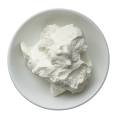Munching your bowl of Raisin Bran, you may think you are getting your daily fiber, but the scant amount of fiber in our diets is mostly insoluble fiber or roughage which is not nearly as beneficial as soluble fiber. The average American eats only 3-4 grams a day of soluble fiber. Most sources recommend at least 5-10 grams of soluble fiber a day with a warning to slowly build the amount of fiber in the diet as it might cause uncomfortable gas and/or diarrhea if you eat too much before your system adjusts. This seems like a paltry amount in view of the latest findings about our Paleolithic ancestors. Archeological finds in the desserts along today’s Texas-Mexican border reveal that prehistoric man ate an estimated 135 grams a day of prebiotic soluble fiber. Could our drastically reduced consumption of dietary soluble fiber in modern times explain the current epidemic of chronic diseases like obesity, diabetes, heart disease and cancer? Let's look at the known benefits of soluble fiber:
Benefits of Prebiotic Soluble Fiber
- Promotes the growth of beneficial probiotic bacteria and discourages the overgrowth of pathogenic bacteria.
- Slows absorption of glucose and reduces insulin resistance improving blood sugar control. May prevent diabetes and other metabolic disorders.
- Improves lipid profile lowering LDL cholesterol and triglycerides while raising HDL cholesterol which may reduce the risk of heart disease.
- Prevents inflammation of the intestinal lining and leaky gut syndrome. May prevent or improve chronic inflammation.
- Helps regulate the immune system preventing infections and autoimmune disorders like allergies, asthma and eczema, and serious autoimmune diseases.
- Stimulates intestinal fermentation of soluble fiber into short-chain fatty acids, like butyrate, which may be the root cause of the above mentioned benefits.
You may recall my story of the lab rats which were shown to convert soluble fiber into short chain fatty acids (SCFA), especially butyrate. Higher levels of butyrate measured in human feces are the main indicator of good gut health. As the healthy bacteria flourish in the intestine, they occupy the forest of hair-like protrusions called villi that line the intestine, and keep the bad bugs out of the neighborhood. By producing butyrate, the probiotic micro-organisms signal the immune system that all is well and restore balance preventing any autoimmune attacks that might lead to chronic inflammation in a confused and unbalanced gut environment.
So, how does modern man get more soluble fiber into our diet to get our gut flora back to Eden?
Normal Dietary Sources of Soluble Fiber
As previously stated, the standard American diet (SAD) does not contain much soluble fiber. Among the common foods, the best sources of soluble fiber are: beans, peas, lentils, barley, oat bran, sweet potatoes, onions, garlic, broccoli, citrus fruit, pears and apples. Frankly, it would be hard to get more than five grams a day of soluble fiber eating these foods. For a diabetic, many of these foods contain too much carbohydrate that might adversely affect one’s blood glucose levels. If you are concerned about good gut health, consider adding specialized soluble fibers known to be concentrated sources of prebiotic fiber.
Oligosaccharides
The two prebiotics that are most commonly used as supplements are FOS (fructo-oligosaccharides) and inulin which is usually extracted from chicory root or Jerusalem artichoke. These are powerful prebiotics, so I would not attempt any prehistoric doses at the onset. I read that a therapeutic dose could be over 20 grams/day, but one should start much lower. So, I took 2 grams the first day and 20 grams on the second day. Wow! Talk about a gut feeling. My relationship with my wife was less than harmonious as she was serenaded all night by the wind section.
Some bacteria also makes hydrogen and methane when they ferment soluble fiber and some bacteria consume hydrogen and methane. It takes awhile for the trillions of bacteria in our gut to adapt to their new roles. I recommend starting by adding just 1 gram of FOS and/or inulin to your dailly coffee, tea or favorite beverage ... and gradually ramping up. FOS and inulin are slightly sweet and water soluble. They are often blended with artificial sweeteners to provide a more balanced sweetness and better mouth feel.
I now consume at least 10 grams a day of FOS and 15 grams a day of inulin. FOS ferments relatively fast in the upper portion of your intestine while inulin ferments more slowly in the lower sections of your intestine. Combining these two powerful prebiotics distributes the benefits throughout your gut ... and I feel great! Despite my conscious effort to consume more prebiotic soluble fiber, my experiments have shown that if I attempt to eat paleolithic levels of soluble fiber (>100 grams/day), I will still suffer flatulence and diarrhea. It appears that some of the super probiotic bugs that inhabited our paleolithic ancestors' guts may now be extinct. Again, gradualism and moderation is the way to approach prebiotics. I also believe in a diverse source of soluble fiber in the diet.
Mucilage
Psyllium seed husk is the premier source of the soluble fiber mucilage. It is 71 percent mucilage and nine percent insoluble fiber. It is sold as the popular bulking agent Metamucil which is used principally as a laxative. Some of the best food sources of mucilage are flax seed and chia seed which can both be ground as a flour and used as a wheat flour substitute for low net carb and high fiber baked goods. Very tasty. Okra, called Lady Fingers in parts of Asia, is a vegetable that is high in mucilage. Several cacti are rich sources including aloe vera and agave. Fenugreek, a seed used as a seasoning in Indian food, is another good source. Kelp consumed as a sea vegetable has lots of mucilage as well as iodine and carrageen is another seaweed source derived from Irish Moss. Slippery elm bark, which is an herbal remedy for many gastrointestinal disorders, has mucilage as its primary active ingredient.
Pectin
This prebiotic fiber can be found in small amounts in some fruits and vegetables. Commercial pectin is derived from citrus peel which is about 30% pectin and the pomace that is left after apples are pressed for juice or cider. Pectin is used as a gelling agent in jams and jellies and as a thickener in many processed foods. Pectin sold for making jams and jellies often has added sugar, but it can also be found in its pure form as a nutritional supplement.
Gums
Many gums are used by the food processing industry as jelling agents and thickeners. The most common are guar gum, gum Arabic (acacia senegal gum) and xanthan gum. They are also sold as gluten substitutes for people who have gluten intolerance to use in baked goods. Some Celiacs, however, cannot tolerate these gums. People with sensitive guts sometimes find these vegetable gums irritating, so I no longer recommend them.
Beta-glucan
The prebiotic fiber beta-glucan is regarded as very effective for modulating immune response. Extracts derived from bakers’ yeast and some medicinal mushrooms are marketed as nutritional supplements. Reshi, Maitake and Shiitake mushrooms are Asian culinary delicacies especially high in beta-glucan that are noted for their medicinal effects. Oat bran and barley are a more common source of beta-glucan but also contain a large amount of starch which quickly converts to glucose in the body.
Glucomannan
The soluble fiber gluccomannan comes from the konjac root, a yam-like tuber. Its flour is used to make noodles and fruit jellies in Asia. Because of its ability to quickly absorb lots of water, it is sometimes used as a weight loss supplement that gives one a feeling of fullness. This same characteristic has resulted in some rare instances of capsules of glucomannan expanding too quickly in the body resulting in dangerous blockages. It is best consumed as the traditional Asian translucent noodle called "shirataki" in Japan and "mo yu" in China which is available at most Asian grocers.
Other Non-Starch Polysaccharides
Agar agar is a polysaccharide extracted from red algae that is used as gelling agent (vegetarian gelatin). It is best known as the medium used in petri dishes to grow cultures in labs. It gels liquids at a lower temperature than gelatin and is much firmer. It makes a really great aspic.
Resistant Starches
The principal source of soluble fiber in most Western diets is resistant starch from sources like beans, barley and oats, and to a a lessor extent, whole grains. These are starches that are not fully digested in the upper intestine and are fermented in the lower intestine. One problem ... RS is always accompanied by other starches which are quickly metabolized into glucose. All the above legumes and grains also contain phytic acid which is an anti-nutrient that blocks the absorption of many beneficial nutrients. Healthy people can eat moderate amounts of legumes and grains, but I know of no resistant starch source which I can recommend to those suffering from obesity, diabetes or any metabolic disorder.
So, how does modern man get more soluble fiber into our diet to get our gut flora back to Eden?
Normal Dietary Sources of Soluble Fiber
As previously stated, the standard American diet (SAD) does not contain much soluble fiber. Among the common foods, the best sources of soluble fiber are: beans, peas, lentils, barley, oat bran, sweet potatoes, onions, garlic, broccoli, citrus fruit, pears and apples. Frankly, it would be hard to get more than five grams a day of soluble fiber eating these foods. For a diabetic, many of these foods contain too much carbohydrate that might adversely affect one’s blood glucose levels. If you are concerned about good gut health, consider adding specialized soluble fibers known to be concentrated sources of prebiotic fiber.
Oligosaccharides
The two prebiotics that are most commonly used as supplements are FOS (fructo-oligosaccharides) and inulin which is usually extracted from chicory root or Jerusalem artichoke. These are powerful prebiotics, so I would not attempt any prehistoric doses at the onset. I read that a therapeutic dose could be over 20 grams/day, but one should start much lower. So, I took 2 grams the first day and 20 grams on the second day. Wow! Talk about a gut feeling. My relationship with my wife was less than harmonious as she was serenaded all night by the wind section.
Some bacteria also makes hydrogen and methane when they ferment soluble fiber and some bacteria consume hydrogen and methane. It takes awhile for the trillions of bacteria in our gut to adapt to their new roles. I recommend starting by adding just 1 gram of FOS and/or inulin to your dailly coffee, tea or favorite beverage ... and gradually ramping up. FOS and inulin are slightly sweet and water soluble. They are often blended with artificial sweeteners to provide a more balanced sweetness and better mouth feel.
I now consume at least 10 grams a day of FOS and 15 grams a day of inulin. FOS ferments relatively fast in the upper portion of your intestine while inulin ferments more slowly in the lower sections of your intestine. Combining these two powerful prebiotics distributes the benefits throughout your gut ... and I feel great! Despite my conscious effort to consume more prebiotic soluble fiber, my experiments have shown that if I attempt to eat paleolithic levels of soluble fiber (>100 grams/day), I will still suffer flatulence and diarrhea. It appears that some of the super probiotic bugs that inhabited our paleolithic ancestors' guts may now be extinct. Again, gradualism and moderation is the way to approach prebiotics. I also believe in a diverse source of soluble fiber in the diet.
Mucilage
Psyllium seed husk is the premier source of the soluble fiber mucilage. It is 71 percent mucilage and nine percent insoluble fiber. It is sold as the popular bulking agent Metamucil which is used principally as a laxative. Some of the best food sources of mucilage are flax seed and chia seed which can both be ground as a flour and used as a wheat flour substitute for low net carb and high fiber baked goods. Very tasty. Okra, called Lady Fingers in parts of Asia, is a vegetable that is high in mucilage. Several cacti are rich sources including aloe vera and agave. Fenugreek, a seed used as a seasoning in Indian food, is another good source. Kelp consumed as a sea vegetable has lots of mucilage as well as iodine and carrageen is another seaweed source derived from Irish Moss. Slippery elm bark, which is an herbal remedy for many gastrointestinal disorders, has mucilage as its primary active ingredient.
Pectin
This prebiotic fiber can be found in small amounts in some fruits and vegetables. Commercial pectin is derived from citrus peel which is about 30% pectin and the pomace that is left after apples are pressed for juice or cider. Pectin is used as a gelling agent in jams and jellies and as a thickener in many processed foods. Pectin sold for making jams and jellies often has added sugar, but it can also be found in its pure form as a nutritional supplement.
Gums
Many gums are used by the food processing industry as jelling agents and thickeners. The most common are guar gum, gum Arabic (acacia senegal gum) and xanthan gum. They are also sold as gluten substitutes for people who have gluten intolerance to use in baked goods. Some Celiacs, however, cannot tolerate these gums. People with sensitive guts sometimes find these vegetable gums irritating, so I no longer recommend them.
Beta-glucan
The prebiotic fiber beta-glucan is regarded as very effective for modulating immune response. Extracts derived from bakers’ yeast and some medicinal mushrooms are marketed as nutritional supplements. Reshi, Maitake and Shiitake mushrooms are Asian culinary delicacies especially high in beta-glucan that are noted for their medicinal effects. Oat bran and barley are a more common source of beta-glucan but also contain a large amount of starch which quickly converts to glucose in the body.
Glucomannan
The soluble fiber gluccomannan comes from the konjac root, a yam-like tuber. Its flour is used to make noodles and fruit jellies in Asia. Because of its ability to quickly absorb lots of water, it is sometimes used as a weight loss supplement that gives one a feeling of fullness. This same characteristic has resulted in some rare instances of capsules of glucomannan expanding too quickly in the body resulting in dangerous blockages. It is best consumed as the traditional Asian translucent noodle called "shirataki" in Japan and "mo yu" in China which is available at most Asian grocers.
Other Non-Starch Polysaccharides
Agar agar is a polysaccharide extracted from red algae that is used as gelling agent (vegetarian gelatin). It is best known as the medium used in petri dishes to grow cultures in labs. It gels liquids at a lower temperature than gelatin and is much firmer. It makes a really great aspic.
Resistant Starches
The principal source of soluble fiber in most Western diets is resistant starch from sources like beans, barley and oats, and to a a lessor extent, whole grains. These are starches that are not fully digested in the upper intestine and are fermented in the lower intestine. One problem ... RS is always accompanied by other starches which are quickly metabolized into glucose. All the above legumes and grains also contain phytic acid which is an anti-nutrient that blocks the absorption of many beneficial nutrients. Healthy people can eat moderate amounts of legumes and grains, but I know of no resistant starch source which I can recommend to those suffering from obesity, diabetes or any metabolic disorder.
As you cultivate healthy gut flora, think of probiotics and probiotic yogurt as the seed of your emerging health, and prebiotic soluble fiber as the fertilizer to help the good bacteria thrive. Remember that the opposite of prebiotics is fructose and other simple carbs which are unhealthy nutrients that feed bad bacteria and yeasts. Unless you are living like a prehistoric hunter-gather in the Chihuahuan Dessert dining on the local cacti, you will be doing very well if you can consume 20+ grams a day of soluble fiber.
+chronic+disease.jpg)












